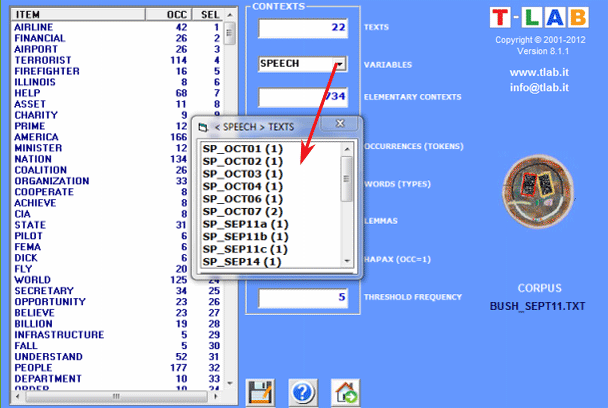|
www.tlab.it
Automatic
Settings
When this option is selected in the subsequent analyses
the Key-Terms used will be chosen
automatically by T-LAB.
The automatic list includes up to
3,000 lexical units which belong to the category of
content words: nouns, verbs,
adjectives and adverbs.
The selection criterion varies according to the kind of
file analysed.
If the corpus is a single text T-LAB simply selects the lexical units with
the highest occurrence values.
If the corpus is made up of two or more texts T-LAB uses the following algorithm:
· it selects the words with occurrence values higher than the
minimum threshold;
· it computes the TF-IDF or applies the
chi-square test to all the crosses of each
selected word for all the texts being analysed (N.B.: In the case
of chi square test, the maximum number of text allowed is 500);
· it selects the words with the TF-IDF or chi-square highest
values, that is those words that, in the corpus, make the
difference.
You can check the list of T-LAB key-terms by using the function Memo.

|